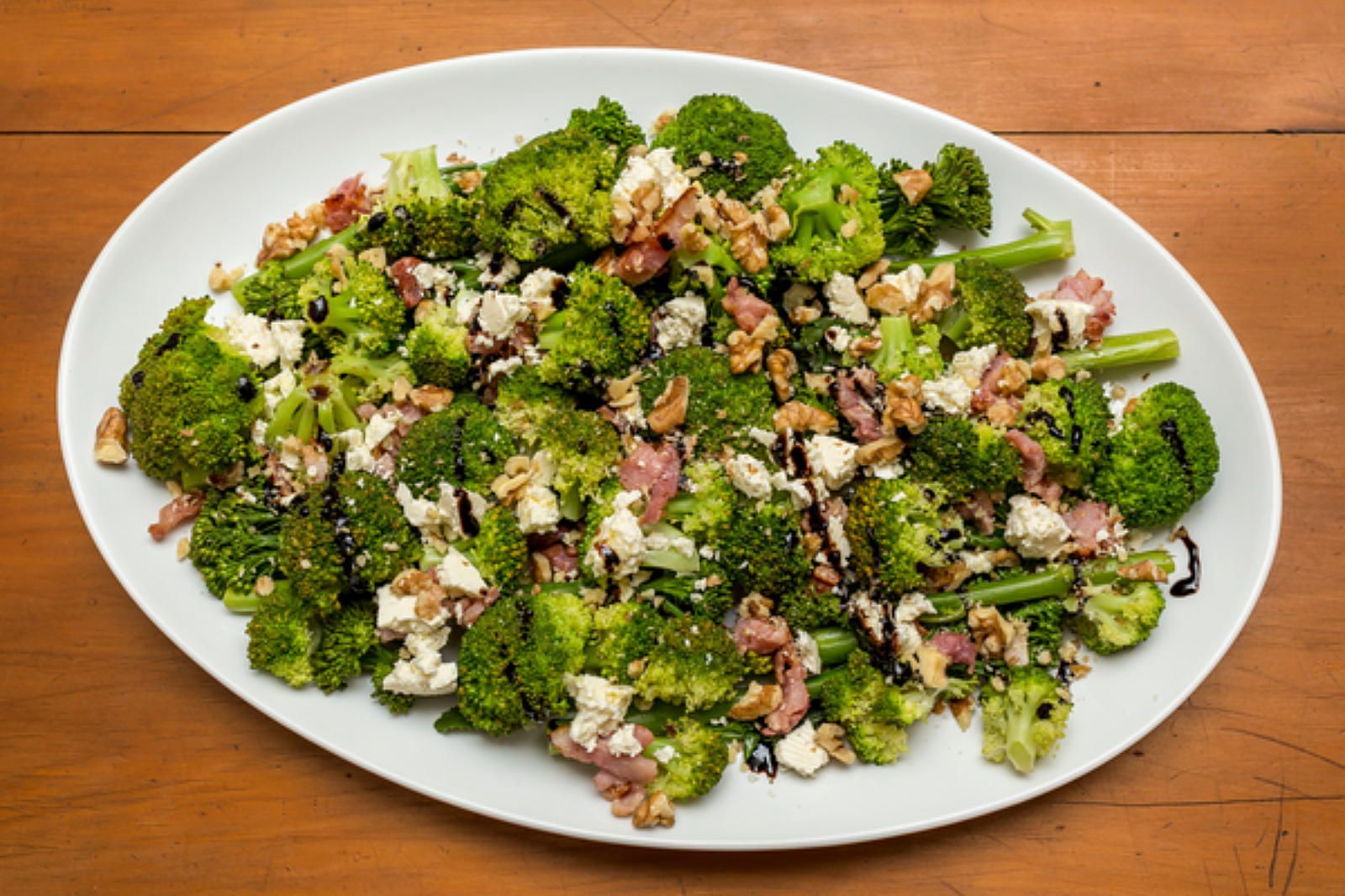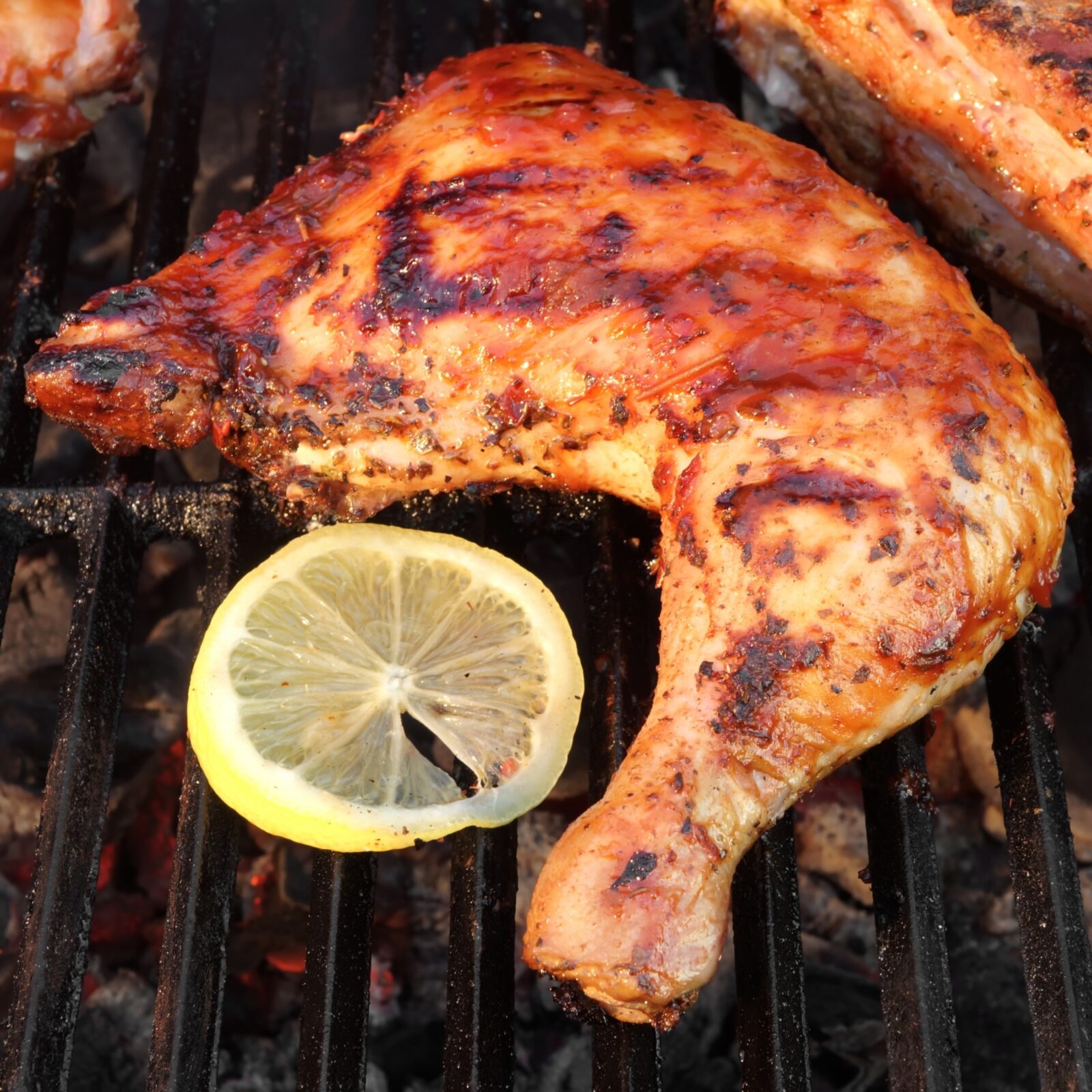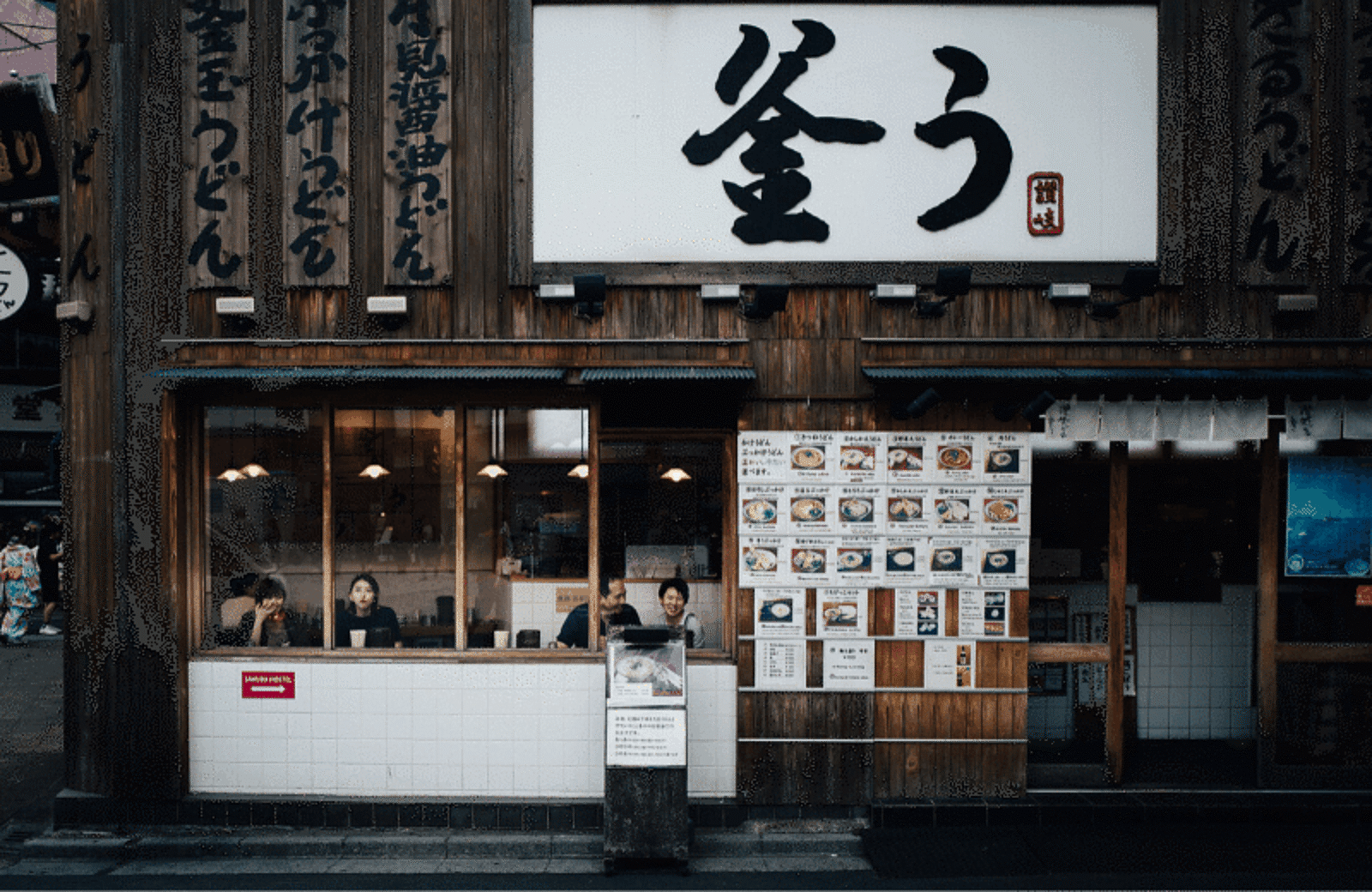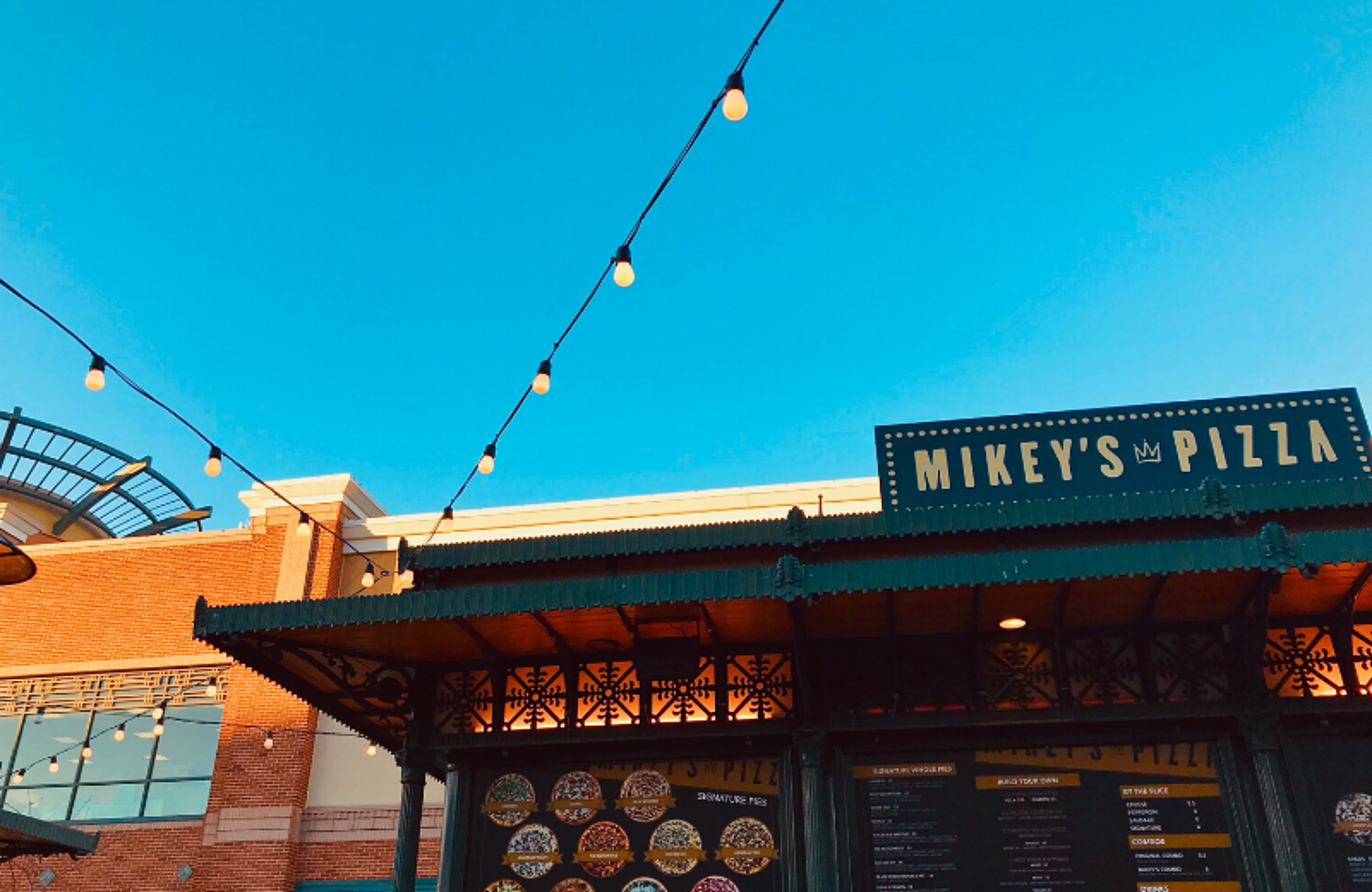
Menu Engineering: A Glossary of Menu Terms to Know
Menu engineering is taking over the restaurant world, but what exactly is it? And why is it important? Before you start, you should be familiar with these menu engineering terms.

Kendal AustinAuthor
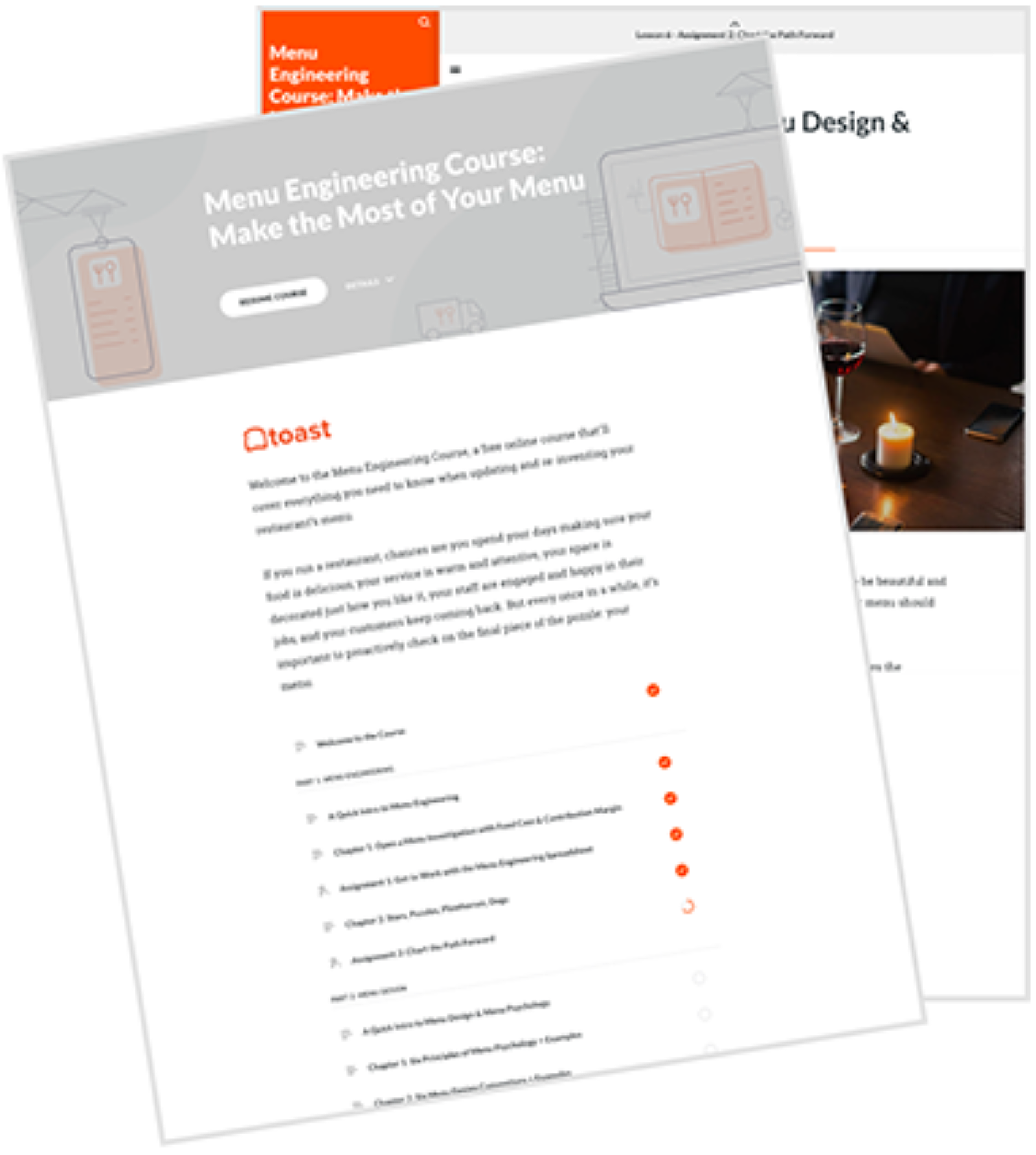

Menu Engineering Course
Take this course to make the most of your menu. Learn about menu psychology and design, managing your menu online, and adapting your menu to increase sales.
Get free downloadMenu engineering and design are hot topics in the restaurant industry right now.
Restaurateurs are becoming increasingly aware of the impact that a strategic and data-driven menu can have on their bottom line and restaurant cost control. Maybe they're inserting visual cues to draw attention or calculating costs down to the ounce. Either way, it's clear menus are no longer simply a list of dishes.
With this new wave of menu research comes a lot of terms that are becoming more commonplace in the restaurant industry. Here's a brief index of what you'll need to know to re-engineer your menu for maximum profitability.
Menu Engineering Course
Take this course to make the most of your menu. Learn about menu psychology and design, managing your menu online, and adapting your menu to increase sales.

15 Restaurant Menu Engineering Terms
Menu Engineering
The study and optimization of a menu based on the popularity and profitability of menu items. Menu engineering is a data-driven practice restaurant owners use to increase revenue and reduce waste.
Menu Design
A subset of menu engineering focused on the visual science and appeal of a restaurant’s menu. Menu design should reflect a restaurant’s brand and personality while taking into account consumer psychology and visual aesthetics.
Brand
The core associations that a consumer has with a business. A restaurant’s “brand” is the first thing that comes to mind when a guest hears the name. It’s often the components that set this business apart from others.
Cost of Goods Sold (COGS)
A mathematical equation to determine the cost required to create each of the food and beverage items on the menu. It is the sum of beginning and purchased inventory subtracted by final inventory. COGS is particularly important for menu engineering because lowering it has a direct correlation to a more profitable restaurant.
Food Cost Percentage
A mathematical equation that calculates the percentage of a menu item cost that the restaurant takes as profit. It’s calculated by dividing the cost to create the menu item by the price of the item. The difference is the percentage that the restaurant makes on each sale of that item.
15 Restaurant Menu Engineering Terms
Menu Engineering
The study and optimization of a menu based on the popularity and profitability of menu items. Menu engineering is a data-driven practice restaurant owners use to increase revenue and reduce waste.
Menu Design
A subset of menu engineering focused on the visual science and appeal of a restaurant’s menu. Menu design should reflect a restaurant’s brand and personality while taking into account consumer psychology and visual aesthetics.
Brand
The core associations that a consumer has with a business. A restaurant’s “brand” is the first thing that comes to mind when a guest hears the name. It’s often the components that set this business apart from others.
Cost of Goods Sold (COGS)
A mathematical equation to determine the cost required to create each of the food and beverage items on the menu. It is the sum of beginning and purchased inventory subtracted by final inventory. COGS is particularly important for menu engineering because lowering it has a direct correlation to a more profitable restaurant.
Food Cost Percentage
A mathematical equation that calculates the percentage of a menu item cost that the restaurant takes as profit. It’s calculated by dividing the cost to create the menu item by the price of the item. The difference is the percentage that the restaurant makes on each sale of that item.
Contribution Margin
A mathematical equation that measures a menu item’s profitability over time. By subtracting food costs within a certain time period from menu item sales within that same period, restaurateurs can use this metric to measure how sales affect income and how costs are affected over time.
Stars
The quadrant of items in a menu engineering chart that are both highly profitable and highly popular. These are the items that should be consistent on the menu and used in promotions whenever possible.
Plowhorses
The quadrant of items in a menu engineering chart that are very popular but not very profitable for the business. These are likely the items that guests expect to see, but may need to have ingredients or portion size modified to improve margin.
Puzzles
The quadrant of items in a menu engineering chart that are highly profitable to the restaurant but aren’t popular with guests. These are potentially hidden gems that need to be reinvented by lowering prices, changing their position on the menu, or packaging them a different way.
Dogs
The quadrant of items in a menu engineering chart that are neither popular or profitable. Most likely, these items should be removed from your menu and replaced with more profitable dishes.
Menu Psychology
The application of consumer behavior theories to menu design. Menu item organization, placement, and visual cues can be strategically implemented based on what we know about human psychology.
Paradox of Choice
The theory that more choices can actually lead to increased confusion and poor decisions. In menu engineering, studies have shown that there is a sweet spot between too few and too many choices.
Decoy Effect
A psychological phenomenon that says people are more likely to change their preference between two options when a third, less appealing option, is introduced to show the “value” of the most expensive option. In menu engineering, this is the science of bundling options to improve their perceived value.
Semantic Salience
The impact that a symbol has on a particular situation or decision-making process. This is often used to define the impact that a dollar sign on a menu item (or lack thereof) has on the perceived value.
Sensory Descriptors
Words and phrases that appeal directly to a person’s sight, smell, hearing, taste, or feeling. These words, like “succulent,” “smooth,” and “aromatic,” are often used in menu item descriptions to draw out a specific reaction from the guest.
Now that you're familiar with the key terms, get started revamping your menu for maximum profitability. Start the Menu Engineering Course today.
Related Menu Ideas
Restaurant Cost Control Guide
Use this guide to learn more about your restaurant costs, how to track them, and steps you can take to help maximize your profitability.

Is this article helpful?
DISCLAIMER: This information is provided for general informational purposes only, and publication does not constitute an endorsement. Toast does not warrant the accuracy or completeness of any information, text, graphics, links, or other items contained within this content. Toast does not guarantee you will achieve any specific results if you follow any advice herein. It may be advisable for you to consult with a professional such as a lawyer, accountant, or business advisor for advice specific to your situation.
Read More
Subscribe to On the Line
Sign up to get industry intel, advice, tools, and honest takes from real people tackling their restaurants’ greatest challenges.

